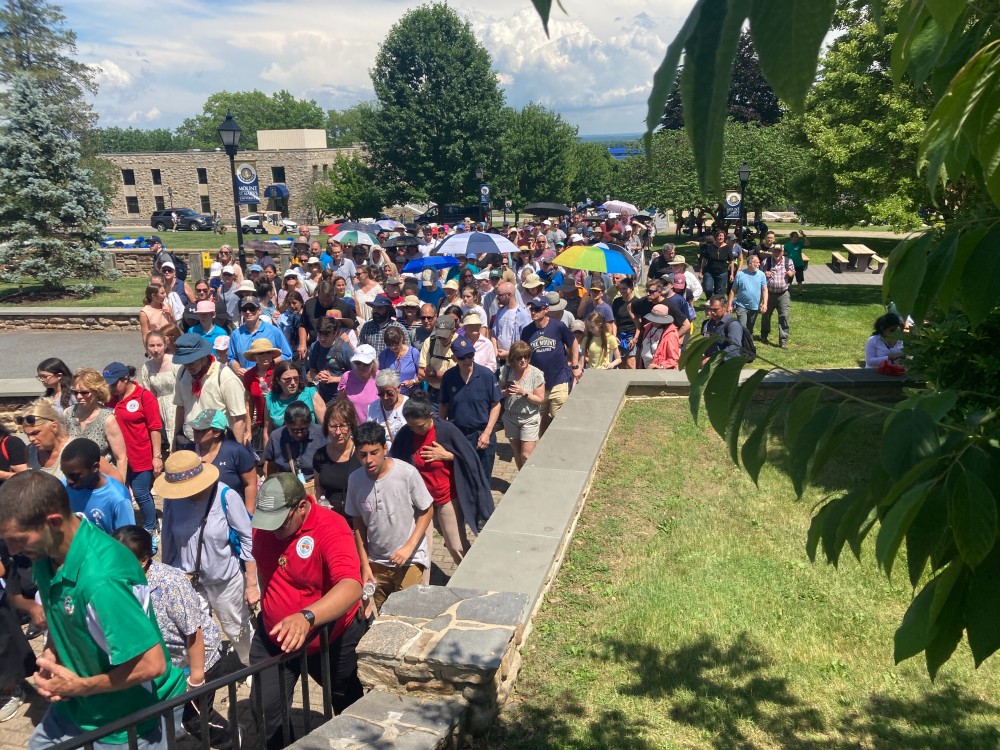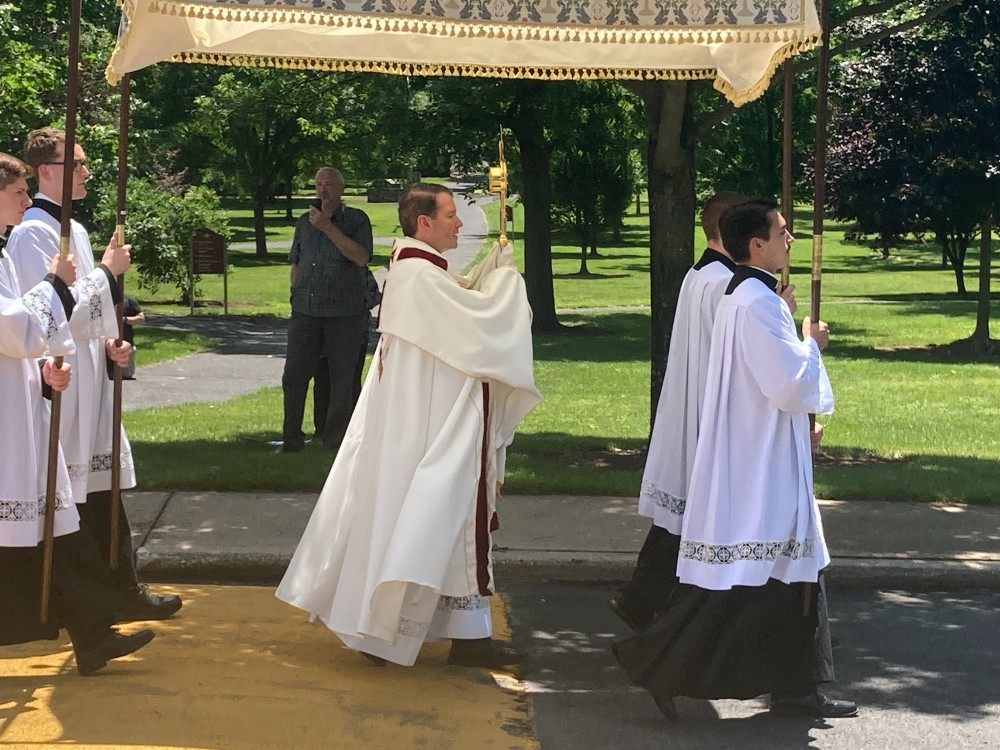
EMMITSBURG, Maryland — A few hundred pilgrims spent the day June 6 in the rural area of Maryland where St. Elizabeth Ann Seton started her ministry and is buried.
On a humid but clear sunny day they processed in prayer and song with the Eucharist in the morning on the grounds of the National Shrine of Saint Elizabeth Ann Seton and then through the town of Emmitsburg with stops at St. Elizabeth Ann Seton School and St. Joseph’s Parish before returning to the shrine.
Before the procession continued, there was a Benediction at the shrine and two hours of Eucharistic adoration and opportunities for confession. Pilgrims also gathered on the grounds, congregating under the shade of trees and getting lunch from food trucks lining the shrine’s driveway.
In the afternoon, the procession continued with a three-mile walk to Mount St. Mary’s University where it stopped outside the school’s Immaculate Conception Chapel and seminary as well as St. Anthony’s Church and the National Shrine Grotto of Our Lady of Lourdes for brief adoration and Eucharistic Benediction.
The pilgrims were part of the St. Elizabeth Ann Seton Route — one of four routes along the National Eucharistic Pilgrimage — set to meet in Indianapolis for the National Eucharistic Congress in July. Many joined just for the day by car or buses from parishes in Maryland, Pennsylvania, and Virginia.
A group of perpetual pilgrims is taking part in the full route that started May 18 in New Haven, Connecticut, and made its way through the Diocese of Brooklyn on May 26-27. After the Emmitsburg stop, the pilgrims were going to Baltimore, Washington, and then Ohio.

Zoe Dongas, a perpetual pilgrim on this route, who is from New York, told Currents News that being at the National Shrine of Saint Elizabeth Ann Seton, where the American saint started her ministry, made the pilgrimage feel like it was home. “It’s been such a gift,” she added.
The saint’s name was chosen for this route to the National Congress because of her devotion to the Eucharist.
“Including the National Shrine of Saint Elizabeth Ann Seton on this route is really special,” said Becca Corbell, associate director of programs at the Seton shrine. She noted that Mother Seton’s decision to convert to Catholicism was largely influenced by her desire to experience the real presence of Christ in the Eucharist.
“Realizing that Catholics believe that you can receive Christ and have just that really intimate physical closeness — she couldn’t turn back from that once she knew that was available to her,” Corbell said.
The day’s procession started with Mass at the Seton shrine celebrated by Baltimore Archbishop William Lori, who said it was both appropriate and a blessing that the shrine was a destination for this pilgrimage route.
He said being in this location should allow pilgrims to “take hold of this great saint’s Eucharistic vision” and to learn the “gravitational pull” that the Eucharist had in her life.
